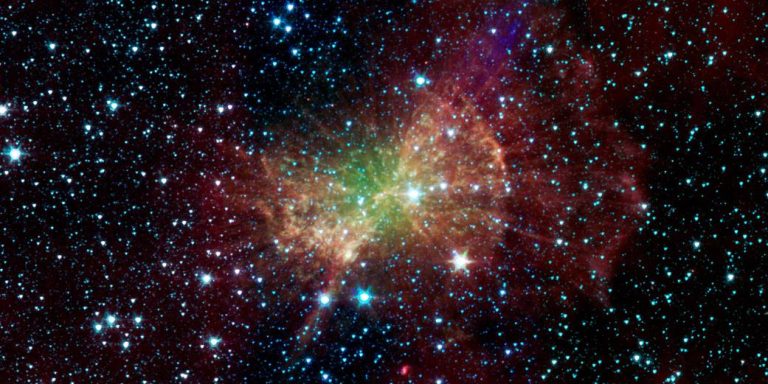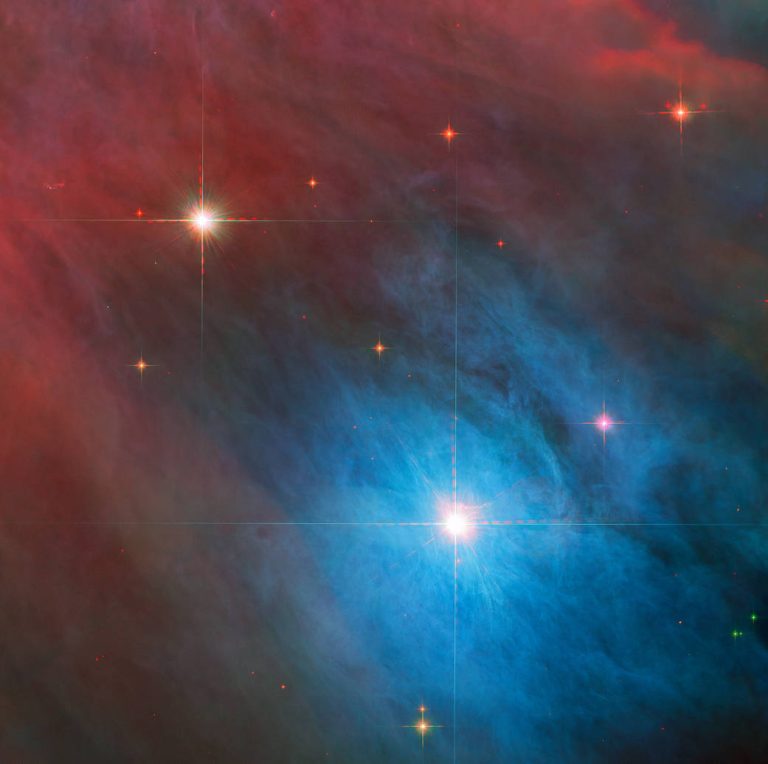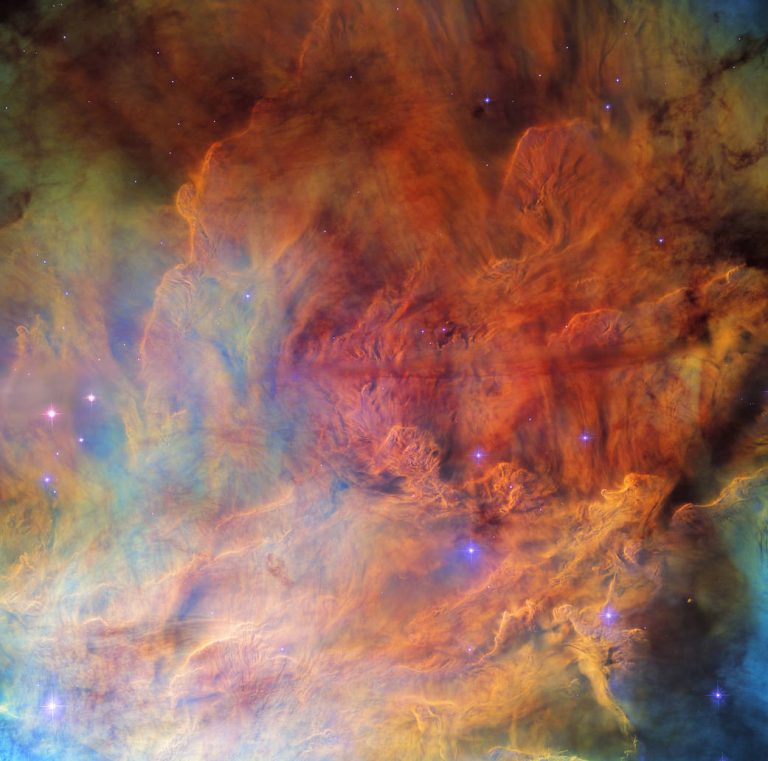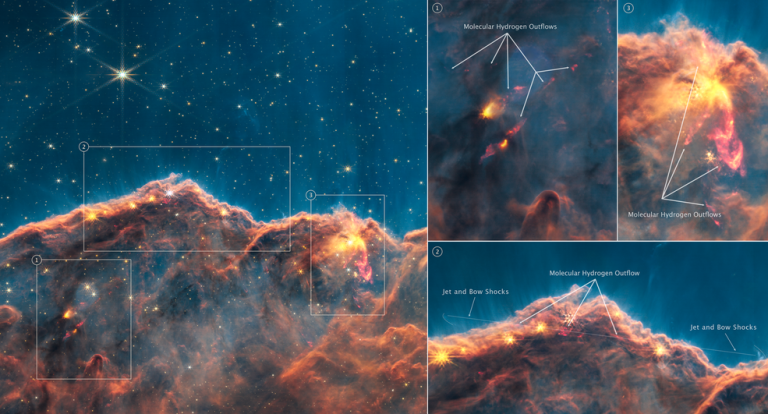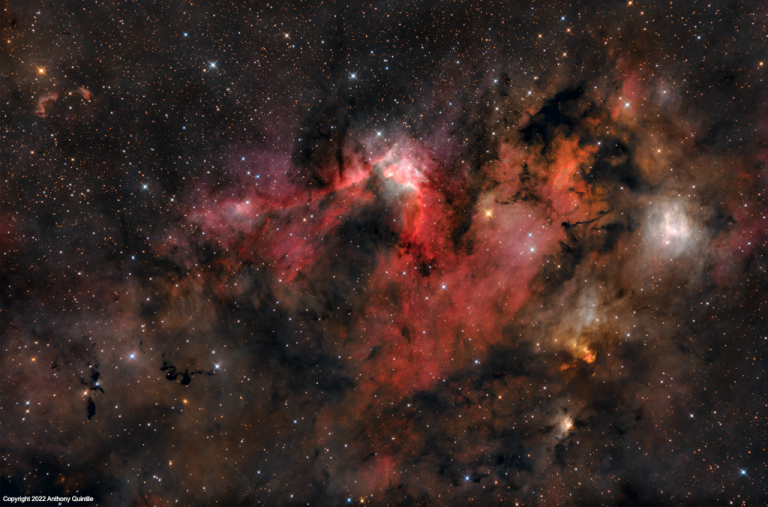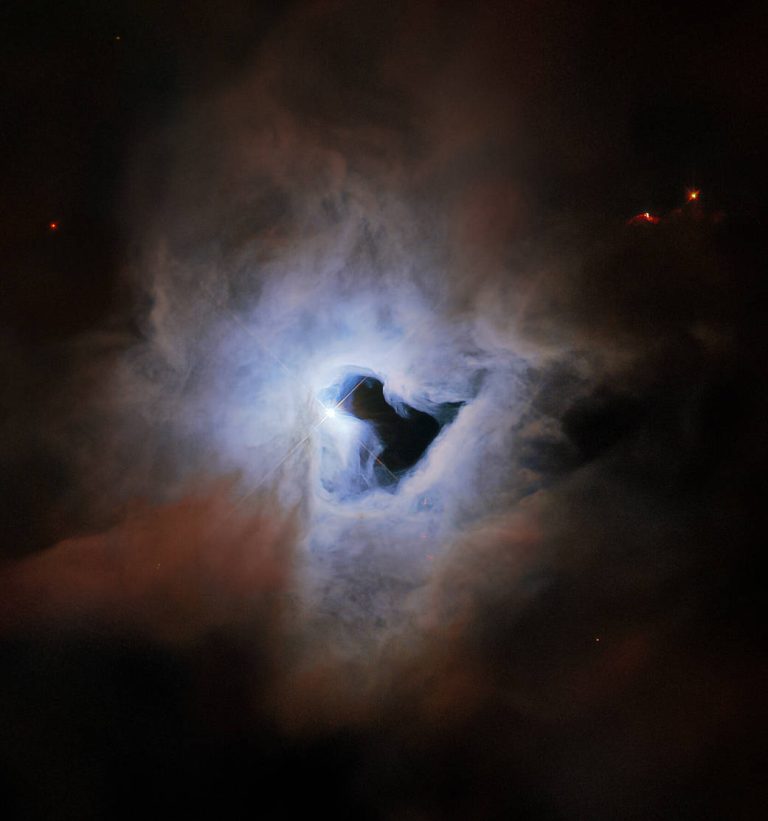哑铃星云发出光秀
Infrared light surges out from the Dumbbell Nebula, also known as Messier 27, in this Aug. 10, 2011, image from NASA’s Spitzer Space Telescope. This nebula was discovered in 1764 by Charles Messier. It was the first in a class of objects, now known as planetary nebulae, to make it into Messier’s catalog of astronomical objects. Planetary nebulae, historically named for their resemblance to gas-giant planets, are now known to be the remains of stars that once looked a lot like our Sun. Image Credit: NASA/JPL-Caltech/Harvard-Smithsonian CfA 2011年8月10日,NASA斯皮策太空望远镜拍摄的这张照片中显示了哑铃状星云(也被称为梅西耶27)发出的红外光。这个星云是查尔斯·梅西耶于1764年发现。这是目前被称为行星状星云的一类天体中第一个将其纳入星云星团表的天体。行星状星云,历史上因其与气态巨行星相似而得名,现在被认为是曾经看起来非常像我们太阳的恒星的残骸。 影像来源:NASA/JPL-Caltech/Harvard-Smithsonian CfA

